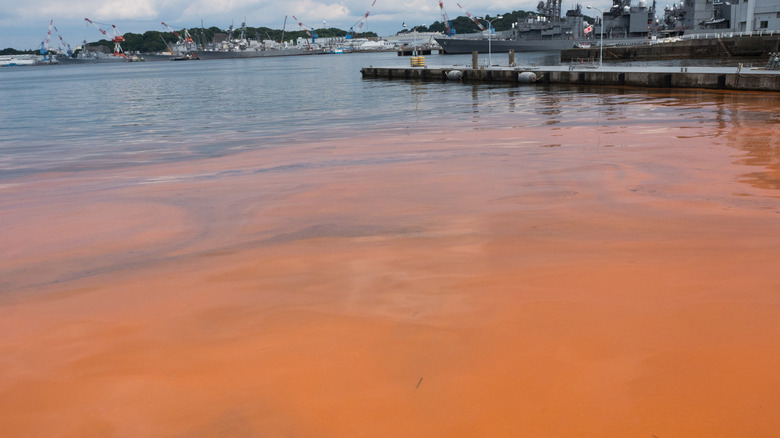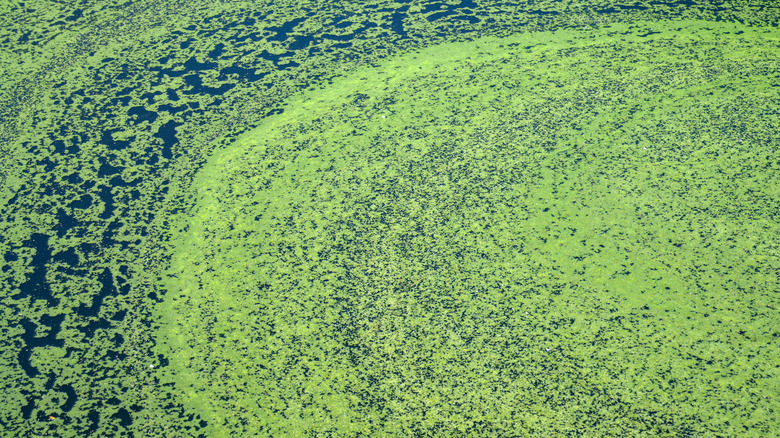This Is What Really Causes Red Tides
A red tide sounds like the kind of thing that would happen in a movie to indicate the end of the world. Seawater turns red, dead marine life floats up to the surface, and even humans can get sick from it. But red tides are actually a frequent natural occurrence, according to the National Oceanic and Atmospheric Administration, especially in the Gulf of Mexico and along the coast of Florida.
A red tide comes from algae, according to the NOAA. The event is known as a harmful algal bloom, or HAB, and it happens when a colony of algae grows suddenly. Some algae, like the ones that cause a red tide, produce chemicals that can be toxic and fatal to fish and even humans. Because of the color of the algae, the water turns red. Red tides happen almost every summer in the Gulf Coast, and many kinds of algal blooms are increasing around the U.S.
Are all algal blooms bad?
There are multiple kinds of algal blooms. While the red tides occur in the Gulf of Mexico, other areas can see blue, green, purple, or brown (via Mental Floss). The color of the bloom depends on which type of algae is surging, and not all of them are harmful. The National Oceanic and Atmospheric Administration points out that algae are an important food source for a lot of marine life, and blooms can be important to sustaining the ecosystem in certain areas. Harmful algal blooms are directly tied to toxins emitted by certain types of algae.
The increased frequency of red tides in recent years could be due to a number of factors. SciJinks says chemicals in the water from industrial sites like factories or sewage treatment plants can encourage algae growth and spur blooms. Even farming practices can contaminate water that eventually ends up in the Gulf of Mexico, contributing to red tides.

